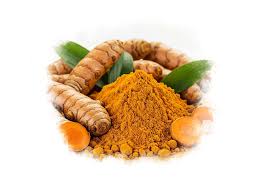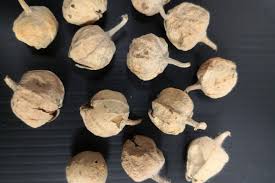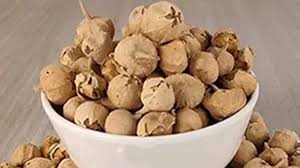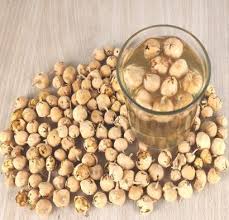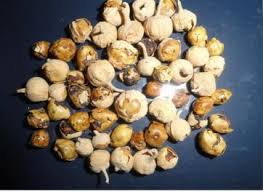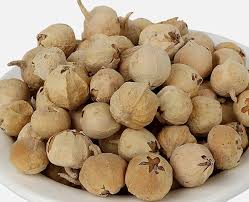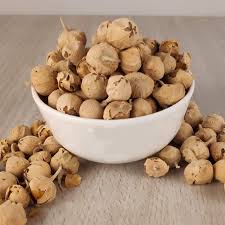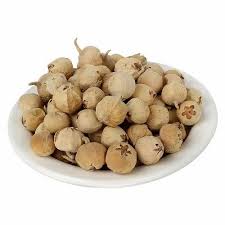
Traditional Tribal Uses of Paneer Phool in India
India is a land of immense cultural and botanical diversity, where traditional tribal knowledge has preserved natural healing practices for generations. Among the many herbal treasures known to tribal communities, Paneer Phool (scientifically called Withania coagulans, also known as Paneer Dodi or Indian Rennet) holds a respected place. Though Ayurveda recognizes Paneer Phool for its medicinal value, its widespread use among India’s tribal populations offers deeper insight into its healing potential and cultural significance.
At Dirghaanshi, our mission is to revive and preserve the ancient and local wisdom of natural remedies. In this article, we explore how various tribal communities across India have used Paneer Phool for generations—highlighting their methods, beliefs, and formulations. We also look at how this ancient knowledge aligns with modern herbalism, strengthening the case for including Paneer Phool in holistic wellness practices.
Long Description
What is Paneer Phool?
Paneer Phool is a dried flower or berry from the Withania coagulans plant, a shrub native to arid regions of India. It is known for its ability to coagulate milk, but it has long been used in traditional medicine systems for a wide range of health conditions—especially in tribal and rural communities.
Common names:
Paneer Dodi
Paneer Phool
Indian Rennet
Dodi Phool
Rishyagandha (in Sanskrit)
Doodhi Phool (in some dialects)
Regions Where Paneer Phool is Traditionally Used
Tribal communities in the following Indian states have a long history of using Paneer Phool:
Rajasthan
Madhya Pradesh
Chhattisgarh
Gujarat
Jharkhand
Maharashtra
Odisha
Telangana and Andhra Pradesh
In each of these regions, Paneer Phool has been passed down as part of oral traditions and local medical systems, used not only to treat diseases but also to maintain general well-being.
Tribal Uses of Paneer Phool – A Region-Wise Look
Rajasthan
In Rajasthan’s tribal belts such as Banswara and Dungarpur, Paneer Phool is used by Bhil and Meena tribes to manage high blood sugar levels, especially in older adults. The dried flowers are soaked overnight and consumed in the early morning. It is also believed to promote cooling of the body during extreme heat.
Madhya Pradesh
The Gond and Baiga tribes of Madhya Pradesh use Paneer Phool for its antidiabetic, liver protective, and anti-fatigue properties. It is often combined with other herbs like Gudmar and Kalmegh in decoctions. In some villages, it’s also administered to women during post-pregnancy recovery for energy and hormonal balance.
Chhattisgarh
Here, traditional healers known as “Baigas” often prepare herbal teas using Paneer Phool for treating joint pain, skin inflammation, and digestion issues. It is also used for fever and to increase general immunity, especially during seasonal infections.
Gujarat
The tribal communities of the Dangs and Gir forests use Paneer Phool for urinary tract infections and liver cleansing. It is often part of household remedies where herbs are soaked together with coriander seeds and turmeric.
Maharashtra
Among tribal populations in regions like Melghat and Nandurbar, Paneer Phool is used by the Korku and Bhil tribes as a remedy for weight loss, energy recovery, and chronic cough. It is also boiled with Tulsi and honey for respiratory relief.
Jharkhand
Santhal and Munda tribes recognize Paneer Phool as a vital immune-strengthening herb. It is often used as a preventive during changing seasons to reduce the risk of cold, flu, and allergies.
Odisha
Tribal populations in Odisha use Paneer Phool for digestive support and liver purification. It is also administered with other bitter herbs for detoxification rituals practiced during fasting periods.
Andhra Pradesh and Telangana
In Telangana’s Nallamala and Adilabad tribal zones, Paneer Phool is part of formulations given to patients suffering from early-stage diabetes, liver swelling, and urinary disorders. It is often mixed with neem leaves and dried gooseberries for a potent herbal tonic.
Common Tribal Preparation Methods
- Soaked Water Infusion
The most widely used method involves soaking 8–10 Paneer Phool berries in a glass of water overnight and drinking the filtered water in the morning. This method is used for blood sugar, body heat regulation, and detox. - Decoction (Kadha)
Tribes often boil Paneer Phool with herbs like Neem, Gudmar, or Triphala to prepare a kadha. This method is used for fever, infections, and liver support. - Powder Blend
Some tribes dry and grind Paneer Phool into a fine powder and mix it with honey or warm water. This is used for fatigue, post-illness recovery, and inflammation. - Topical Paste
In some rare cases, a paste made from Paneer Phool is applied on swollen joints or skin conditions. It is believed to reduce inflammation and speed up healing.
Cultural Beliefs and Symbolism
In addition to its medicinal properties, Paneer Phool carries symbolic and ritual value:
In Rajasthan and Gujarat, it is sometimes offered during traditional healing rituals.
In tribal weddings, women are given detox drinks with Paneer Phool for internal cleansing.
Some communities believe that this herb wards off evil energy and offers spiritual protection during sickness.
Health Benefits Observed by Tribal Use
The consistent and long-standing use of Paneer Phool by tribal communities indicates several benefits:
Regulation of blood sugar
Relief from urinary and digestive issues
Improved energy and vitality
Immune system support
Liver detoxification
Fever and inflammation relief
Comparison to Ayurveda and Modern Science
While tribal uses are based on observation and generational wisdom, Ayurveda describes Paneer Phool (Rishyagandha) as:
Tikta (bitter) and Kashaya (astringent) in taste
Ushna (hot) in potency
Effective in managing Kapha and Vata doshas
Modern research, as covered in earlier Dirghaanshi articles, confirms its benefits in blood sugar management, liver protection, and anti-inflammatory action. This alignment validates the reliability of tribal knowledge as a source of effective herbal practices.
Caution and Safety
While tribal usage shows that Paneer Phool is generally safe, modern caution is advised:
Pregnant and lactating women should consult a physician
Should not be used as a sole replacement for prescribed diabetic medication
Always source Paneer Phool from clean, ethical, and tested providers like Dirghaanshi
Why Dirghaanshi Promotes Paneer Phool
At Dirghaanshi, we honor the depth of traditional herbalism by:
Ethically sourcing wild-crafted Paneer Phool from tribal regions
Ensuring pesticide-free and sustainable harvesting
Supporting tribal gatherers through fair pricing
Offering lab-tested, 100% pure herbs with no additives
Educating consumers about both traditional and scientific uses
Conclusion
Paneer Phool has deep roots in India’s tribal heritage. For generations, it has served as a natural remedy for lifestyle disorders, detoxification, and daily well-being. Whether consumed for blood sugar balance, liver health, or seasonal protection, its wide acceptance among tribal populations highlights its safety, effectiveness, and versatility.
The beauty of India’s traditional medicine lies in its connection to both nature and community. At Dirghaanshi, we celebrate this connection by making these precious remedies accessible, understandable, and trustworthy.
If you are exploring the world of traditional herbs for healing, let Paneer Phool be a symbol of wisdom passed down through the hands of healers, grandmothers, and tribal forest-dwellers of India.


